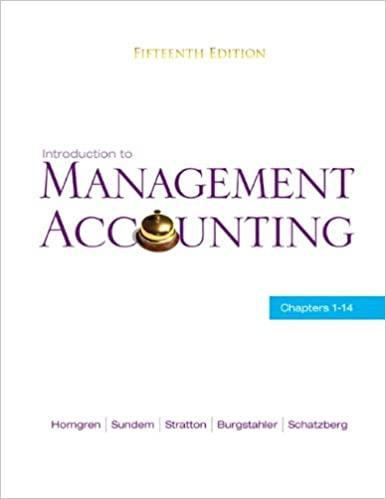Question
Sarah runs a small retail outlet selling various fashion items including a special type of umbrella that withstands high wind. On 1 January, Sarah had
Sarah runs a small retail outlet selling various fashion items including a special type of umbrella that withstands high wind. On 1 January, Sarah had a beginning inventory of 50 umbrellas that had cost $100 each. Inventory transactions during January were:
| January 8 | -Bought 100 umbrellas at $105 each |
| 13 | -Sold 120 umbrellas for $200 each |
| 19 | -Bought 80 umbrellas at $110 each |
| 24 | -Sold 40 umbrellas at $200 per unit |
A stocktake on 31 January found that only 65 umbrellas were on hand (some had been lost or stolen). Ten of the umbrellas on hand were damaged and can only be sold for $80 each.
Work out the cost of goods sold, the inventory shortage expense (for the perpetual inventory system) and the amount for inventory on hand at 31 January under the following inventory systems and cost flow assumptions:
1. Perpetual inventory system and FIFO assumption (fill in the inventory record below). The missing inventory and the discount on the damaged inventory are recorded in the Inventory Shortage Expense account. On the inventory card you can show these amounts at the bottom of the Cost of Goods Sold column (after the total for Cost of Goods Sold). Show the closing inventory pre stocktake in the balance column and then adjust it to show what is actually left on hand and its current value.
2. Periodic inventory system and FIFO assumption (HINT: We assume the units on hand at the end of the month, confirmed by a stocktake, are the most recently purchased.) This method does not involve the use of an inventory record, simply use calculations to work out the amounts required.
3. Perpetual inventory system and averaging assumption (round to whole dollars).
4. Periodic inventory system and averaging assumption (HINT: The total cost of Opening Inventory plus Purchases is divided by the total number of units available for sale to give the value of each item of closing inventory.)
Perpetual inventory (FIFO)
|
|
| Purchases | Cost of goods sold | Balance | ||||||
| Date | Details | Units | Unit cost | Total cost | Units | Unit cost | Total cost | Units | Unit cost | Total cost |
|
|
|
|
|
|
|
|
|
|
|
|
|
|
|
|
|
|
|
|
|
|
|
|
|
|
|
|
|
|
|
|
|
|
|
|
|
|
|
|
|
|
|
|
|
|
|
|
|
|
|
|
|
|
|
|
|
|
|
|
|
|
|
|
|
|
|
|
|
|
|
|
|
|
|
|
|
|
|
|
|
|
|
|
|
|
|
|
|
|
|
|
|
|
|
|
|
|
|
|
|
|
|
|
|
|
|
|
Periodic inventory (FIFO)
Perpetual inventory (averaging)
|
|
| Purchases | Cost of goods sold | Balance | ||||||
| Date | Details | Units | Unit cost | Total cost | Units | Unit cost | Total cost | Units | Unit cost | Total cost |
|
|
|
|
|
|
|
|
|
|
|
|
|
|
|
|
|
|
|
|
|
|
|
|
|
|
|
|
|
|
|
|
|
|
|
|
|
|
|
|
|
|
|
|
|
|
|
|
|
|
|
|
|
|
|
|
|
|
|
|
|
|
|
|
|
|
|
|
|
|
|
|
|
|
|
|
|
|
|
|
|
|
|
|
|
|
|
|
|
|
|
|
|
|
|
|
|
|
|
|
|
|
|
|
|
|
|
|
|
|
|
|
|
|
|
|
|
|
|
|
Periodic inventory (averaging)
Step by Step Solution
There are 3 Steps involved in it
Step: 1

Get Instant Access to Expert-Tailored Solutions
See step-by-step solutions with expert insights and AI powered tools for academic success
Step: 2

Step: 3

Ace Your Homework with AI
Get the answers you need in no time with our AI-driven, step-by-step assistance
Get Started


